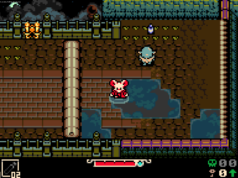If your computer has slowed to a crawl, or stops working entirely, here’s how to see if it’s an easy fix or something that needs more attention.
There are many problems your computer can face. Your laptop can have trouble charging, the screen can stop showing a picture, or it could flat-out not turn on. But it feels like your computer only freezes when you’re right in the middle of the most important tasks, doesn’t it? If it has slowed to a crawl—or become unresponsive entirely—there are a number of possible issues. Here’s how to recover from the problem, and prevent it from happening in the future.1. Give It a Minute to Catch Up
When performing a particularly CPU-intensive task, sometimes things will hang for a moment, making you think your laptop is permanently frozen—even if it’s not. Have the internal fans been working overtime? Is the device overheating? Sometimes certain actions can use up all the computer’s available RAM. If your computer has been overworked and is now completely locked up, give it a few seconds (or minutes) to catch up and finish what it’s doing. As long as this isn’t a common occurrence, everything should be fine if given enough time.2. Check Your Peripherals
Are you sure the computer is really frozen? Make sure the connected peripherals are actually functioning properly. Something could have gotten disconnected or run out of batteries. This will give the illusion that your computer is freezing up, but the input isn’t going through as expected. Investigate everything connected to your computer, making sure the mouse is still working, the keyboard isn’t broken, and the trackpad is responsive. You may even want to investigate the USB ports.3. Kill the Offending Program
If Windows doesn’t recover (or it starts freezing again), hit Ctrl-Shift-Esc to open the Task Manager and see a list of running programs. If one in particular isn’t responding, select it and click the End Task button. Mac users can go to Launchpad > Other > Activity Monitor to view a similar menu. Click on a program and press the X button at the top of the window to close it. Another option is to hit Command-Option-Escape, select the program that isn’t working, and click Force Quit to close it.
Once the offending program has been closed, your OS should snap back to attention, and restarting the app shouldn’t give you a problem. However, if your computer always seems to freeze when that program is running, you may need to uninstall it and find an alternative. If the program is so intensive that it’s running out of resources, you may even need to upgrade your hardware. 4. Check Your Browser’s Task Manager
Sometimes, your computer is running fine but the browser gets stuck on a certain page. When so much of what we do is confined to the browser, it can feel like your whole computer is freezing when it might just be one website. In this scenario, Windows Task Manager might tell you the browser isn’t responding, but you’ll have to dig deeper for more information.
In Chrome and Edge, press Shift-Esc to see the browser’s Task Manager. In Firefox, you can click the menu button and go to More Tools > Task Manager. This will display the different processes running within your browser, potentially offering some insight into which specific page might be using too much memory. It may also be a conflict with an extension—for example, I once had issues with the Grammarly extension freezing Google Docs—so try disabling browser extensions to see if that solves the problem. Hopefully, the developers will issue a fix, as Grammarly did.5. Reboot and Try Again
If you can’t even open the Task Manager, then your computer is truly locked up and the only way to get it moving again is a hard reset. Press and hold down on the power button until the device turns off, then press the power button again to boot back up from scratch.






